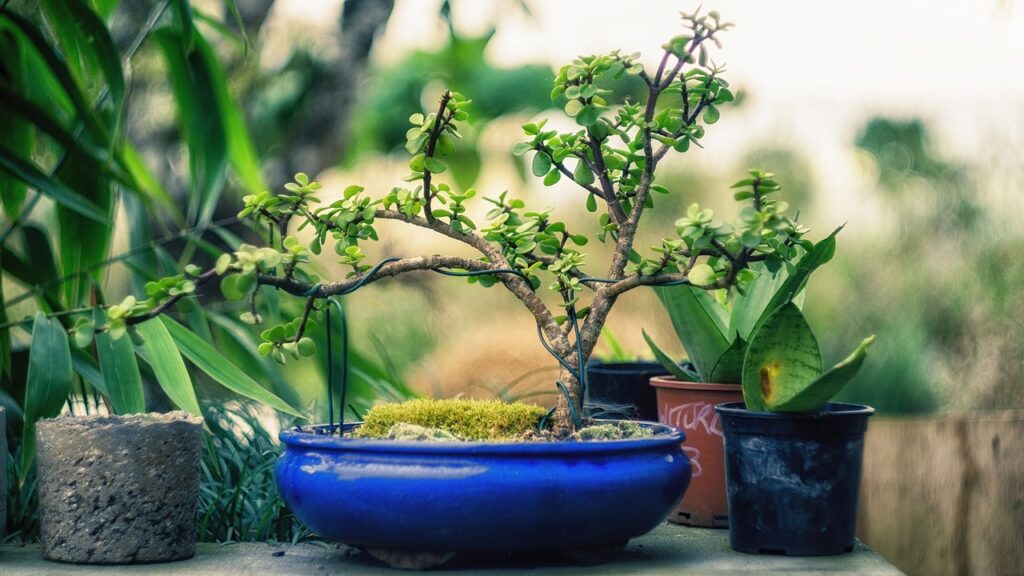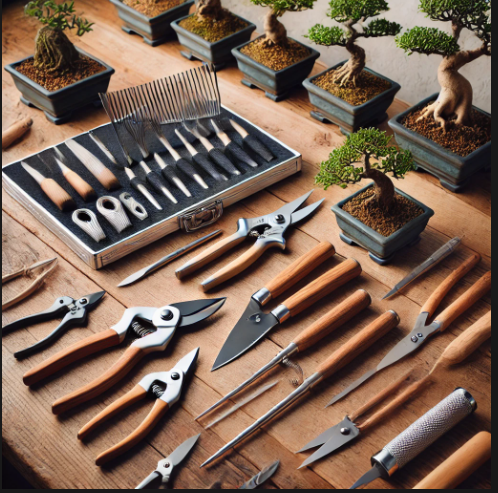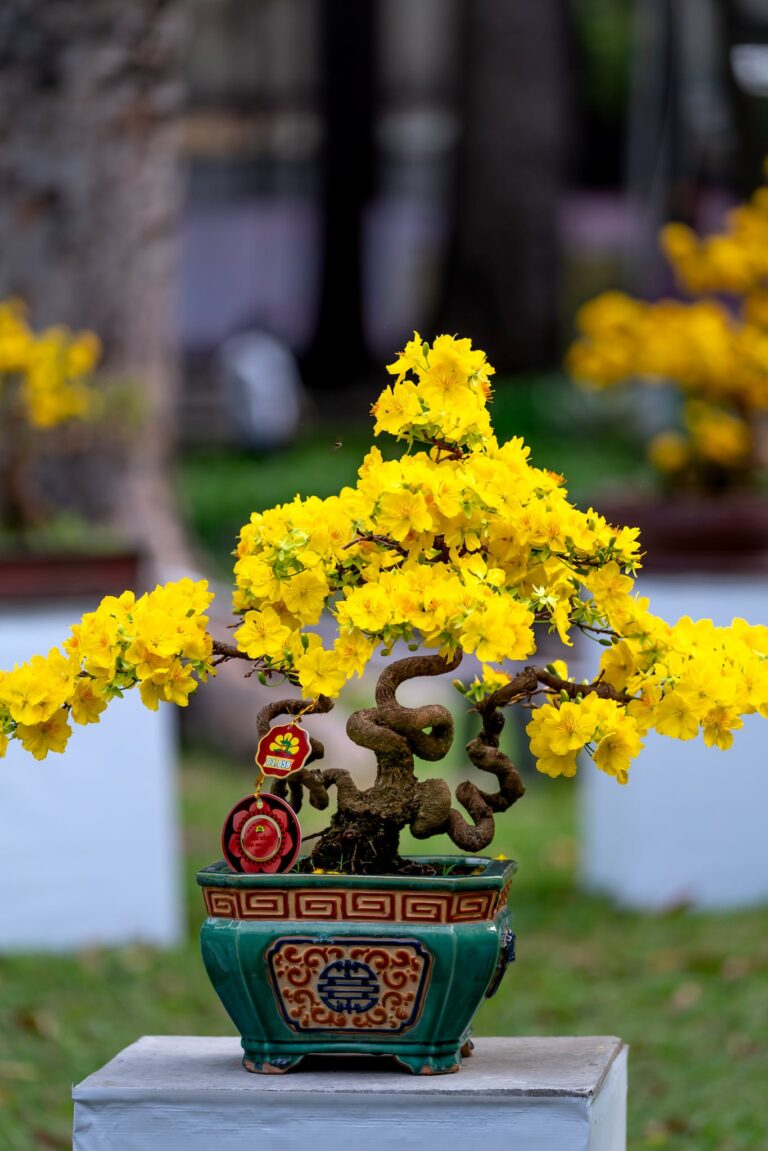What Are Bonsai Trees? Unraveling the Mystery!
In the enchanting world of horticulture and artistic expression, the question “What are bonsai trees?” serves as a gateway to a miniature realm of living masterpieces. Bonsai trees, with their rich history, cultural significance, and timeless allure, encapsulate an ancient art form that transcends traditional gardening.
Delving into the intricacies of bonsai cultivation unveils not only the techniques and styles that define these miniature wonders but also the profound philosophy and therapeutic benefits that make them a captivating pursuit. Join us on a journey to unravel ” what are bonsai tree?”, exploring the delicate balance between human artistry and the resilient beauty of nature.

Introduction
Bonsai, an ancient art form that transforms trees into living sculptures, has captivated hearts for centuries. These miniature trees, cultivated with meticulous care, tell a story of patience, precision, and a harmonious union between human hands and nature’s grace.
The origins of bonsai can be traced back over a millennium, originating in China and refined by Japanese artisans. Initially a symbol of prestige and wealth, bonsai evolved into a cultural practice, embodying philosophies of balance and harmony.
While rooted in tradition, bonsai has experienced a resurgence in popularity in modern times. Beyond cultural borders, bonsai has become a global pursuit, celebrated for its aesthetic appeal and the meditative artistry involved in its cultivation.
Also Read Post: The Ultimate Guide to Bonsai Styles: Explore the Art of Miniaturizing Trees
What are Bonsai trees?
At its core, bonsai translates to “planted in a container” in Japanese. This encapsulates the essence of the practice, emphasizing the art of cultivating and shaping small trees within confined spaces. The term itself holds the key to understanding what bonsai trees truly are.
Bonsai trees are not merely shrunken versions of their larger counterparts; they are living artworks. The meticulous care, including pruning and wiring, imparts a sense of age and weathering. These miniature marvels embody the essence of nature in a confined yet thriving form.
What sets bonsai trees apart lies in their purposeful shaping and styling. Bonsai goes beyond traditional horticulture; it is an intricate art form. The deliberate techniques applied, from shaping branches to creating a sense of balance, transform these trees into miniature representations of the natural world.
The Art of Bonsai
Purpose and Philosophy Behind Bonsai Cultivation
The cultivation of bonsai extends beyond the mere act of growing trees; it embodies a profound philosophy. The purpose lies in creating a living representation of nature, a small yet intricate reflection of the larger world. Bonsai cultivation is a journey of patience, balance, and a harmonious connection with the natural order.
Techniques for Shaping and Styling Bonsai Trees
Shaping and styling bonsai trees require a delicate touch and an understanding of the tree’s response to various interventions. Pruning, a fundamental technique, is employed not only for aesthetic purposes but also to convey a sense of age and resilience. Wiring is another technique used to sculpt the branches, creating a visual harmony within the confined space of a bonsai pot.
Tools and Materials Used in Bonsai Artistry
The art of bonsai relies on a specialized set of tools and materials. Pruning shears, concave cutters, and wire are among the essential tools used by bonsai practitioners. The choice of pots, soil, and even the type of wire utilized in shaping all contribute to the nuanced artistry of bonsai cultivation.
Choosing the Right Bonsai Tree
Popular Species for Bonsai
Bonsai enthusiasts often explore a variety of species, each offering unique characteristics and challenges. Junipers, maples, and pines are popular choices, each bringing its own aesthetic appeal and considerations for cultivation.
Factors to Consider When Selecting a Bonsai Tree
The process of selecting a bonsai tree involves careful consideration. Factors such as the tree’s natural characteristics, the desired style, and the level of maintenance one is willing to undertake play crucial roles in making the right choice.
Understanding the Size and Age of Bonsai Specimens
Bonsai trees are not only defined by their species but also by their size and age. Understanding the growth patterns and potential size of a chosen species is essential. Additionally, the age of a bonsai specimen contributes to its overall aesthetic, with older trees often conveying a sense of maturity and weathering.

Bonsai Care and Maintenance
Essential Elements for Healthy Bonsai Growth
The vitality of a bonsai tree hinges on essential elements such as sunlight, air circulation, and proper nutrition. Understanding the specific needs of the chosen species ensures the overall health and longevity of the miniature tree.
Watering, Fertilizing, and Repotting Guidelines
Bonsai care involves a precise regimen of watering, fertilizing, and occasional repotting. Striking the right balance in these practices is critical, as overwatering or underfertilizing can have adverse effects on the health of the bonsai.
Common Pests and Diseases Affecting Bonsai Trees
Despite meticulous care, bonsai trees are susceptible to pests and diseases. in this topic “what are bonsai trees?” Recognizing common issues such as aphids, scale insects, or fungal infections is essential for timely intervention and preserving the health of the miniature masterpiece.
Bonsai Art
In delving into the topic “what are bonsai trees? “We must discuss art of bonsai, one not only embraces a unique form of horticulture but also embarks on a journey of artistic expression, philosophy, and mindful cultivation. Each aspect of ” what are bonsai trees? from shaping and styling to choosing and caring for bonsai trees, contributes to the rich tapestry of this ancient and ever-evolving art form.
Traditional bonsai styles have been refined over centuries, each with its unique aesthetic principles. Styles such as the formal upright, informal upright, and cascade showcase the classical beauty inherent in the art of bonsai. These traditional styles provide a foundation for enthusiasts to understand the timeless elegance embedded in the practice.
Bonsai is not confined to tradition; it is a living art form that evolves with the times. Contemporary bonsai designs push the boundaries, allowing for innovative expressions of creativity. From abstract compositions to unconventional pot choices, contemporary bonsai captivates with its fresh perspectives and willingness to embrace new ideas.
Choosing a bonsai style becomes a personal expression of taste and aesthetics. Enthusiasts often find themselves drawn to specific styles that resonate with their preferences, whether it be the classical appeal of traditional styles or the avant-garde allure of contemporary designs. “What are bonsai trees”? cover Matching styles with personal preferences adds a layer of individuality to each bonsai journey.
Bonsai as a Therapeutic Hobby
Bonsai cultivation transcends mere gardening; it becomes a therapeutic endeavor. The focused attention required for shaping, pruning, and caring for these miniature trees provides a respite from the stresses of daily life. The rhythmic nature of bonsai care offers a calming escape, promoting mental well-being.
The art of bonsai necessitates a mindful approach. Tending to the intricate needs of a bonsai tree demands concentration and presence in the moment. This connection between mindfulness and bonsai cultivation fosters a deeper appreciation for the intricacies of nature, promoting a sense of inner peace.
Countless individuals have discovered the therapeutic benefits of bonsai cultivation. Personal stories abound, recounting how the act of caring for a bonsai tree has provided solace, relaxation, and a renewed sense of purpose. These anecdotes serve as testament to the transformative power of bonsai as a therapeutic hobby.
Bonsai Communities and Resources
Joining Local Bonsai Clubs and Online Forums
Bonsai is not just a solitary pursuit; it thrives in communities. Joining local bonsai clubs or engaging in online forums connects enthusiasts with a wealth of shared knowledge and experiences. These communities become spaces for learning, sharing, and fostering a sense of camaraderie.
Books, Videos, and Other Educational Materials for Bonsai Enthusiasts
The learning journey in bonsai is continuous, and resources abound. Books, videos, and other educational materials provide enthusiasts with valuable insights into techniques, styles, and the history of bonsai. you can easily understand ” what are bonsai trees?” Building a library of resources becomes an essential part of honing one’s skills in this intricate art.
Networking and Learning from Experienced Bonsai Practitioners
Networking with experienced bonsai practitioners opens doors to mentorship and shared wisdom. Learning directly from those who have dedicated years to the art deepens one’s understanding of bonsai, offering practical tips and guidance for overcoming challenges.
Conclusion
Bonsai, with its rich history, diverse styles, and therapeutic benefits, emerges as a multifaceted art form. From traditional to contemporary designs, each aspect contributes to the tapestry of what bonsai truly is.
Encouraging readers to embark on their bonsai journey, exploring the vast world of possibilities, and discovering the personal joys and therapeutic rewards that bonsai cultivation brings.
As we conclude this exploration into the art of bonsai, let us reflect on the enduring allure of these miniature trees. Answering the question “What are bonsai trees?” takes us beyond a mere definition; it unravels a story of artistry, mindfulness, and a timeless connection with the beauty of nature.







Simply want to say your article is as astounding. The clearness in your submit is simply spectacular and i could suppose you are knowledgeable in this subject. Well together with your permission allow me to clutch your RSS feed to keep up to date with drawing close post. Thanks one million and please keep up the gratifying work.